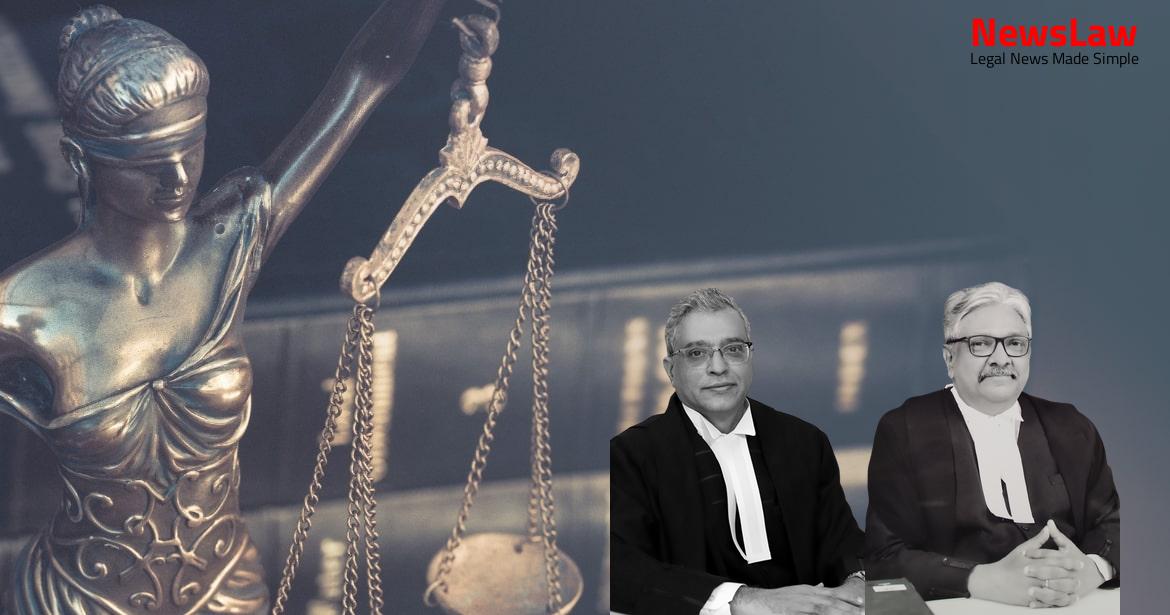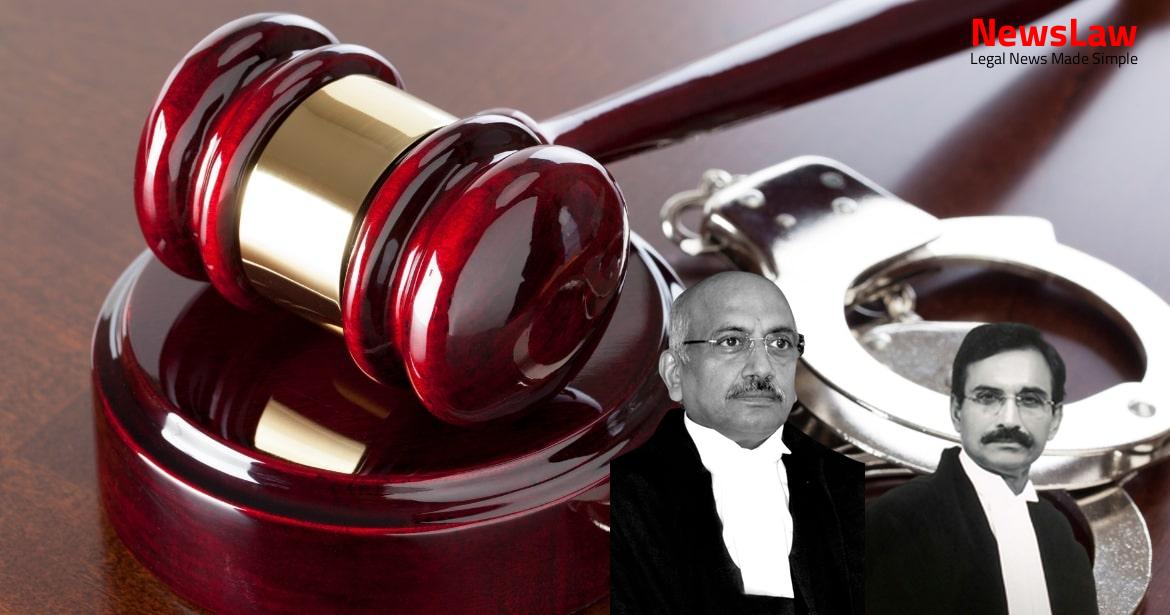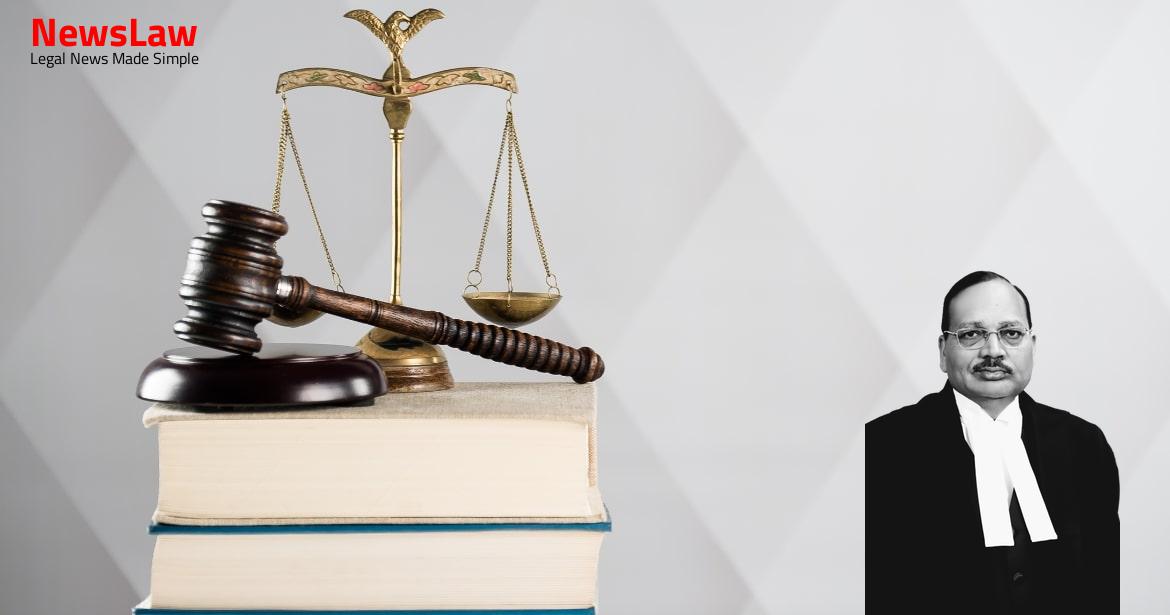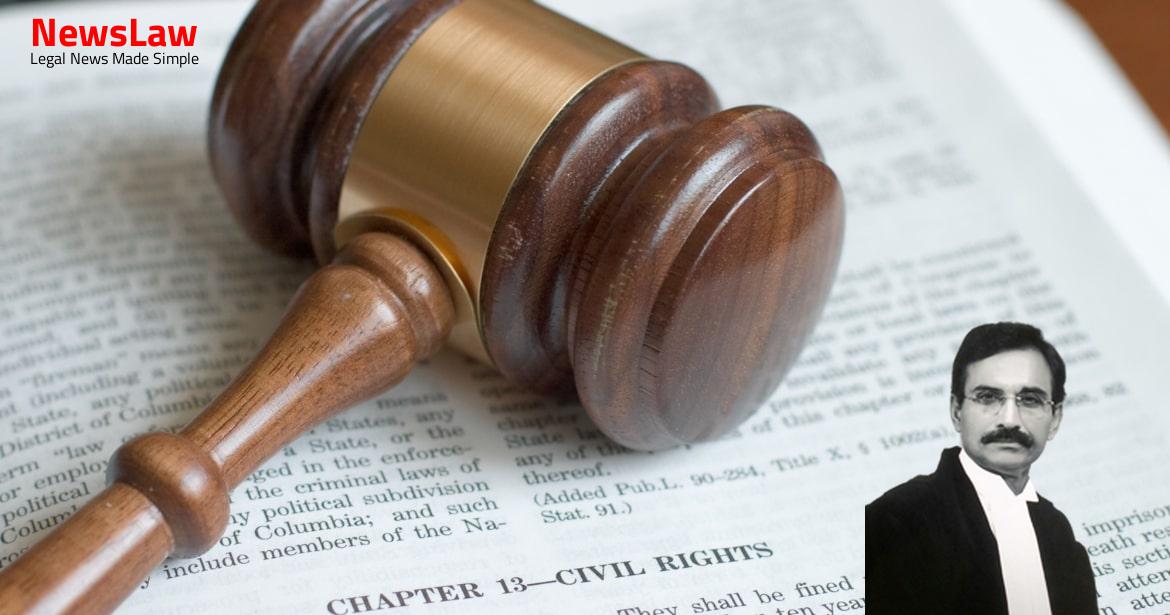Delve into a recent court case highlighting the legal analysis surrounding land acquisition for public welfare. The court’s detailed examination focused on the justification for invoking urgency clauses, the importance of balancing conflicting interests, and the application of eminent domain for public purposes. Discover the nuances of the law and the court’s considerations in this complex legal landscape.
Facts
- Appellants alleged running a cattle market in Sy.880 and Sy.893 and also got a sub-station of 33 KVA constructed.
- Allegations made regarding the issuance of impugned notifications under sections 4 and 17(4) of the Act by the State Government and Respondent No.1.
- Counter affidavit filed on behalf of the 2nd Respondent Authority highlighting developments like wall construction, electrification, road work, and the completion of certain parts of the project.
- Reference made to letters sent by the 3rd respondent providing false information to justify the acquisition.
- Claims made by the Authority regarding planned development and infrastructure for the residential scheme.
- Disputes over the location of the plots in question and the necessity of their acquisition for the scheme.
- Challenges to the urgency clause invoked for acquisition and the possession timeline.
- Details about the scheme’s provisions for allotment, construction for impoverished individuals, water supply systems, and infrastructure development.
- Notifications issued under the Land Acquisition Act challenged by the original appellants.
- Details about the filing of the Writ Petition and the interest liability incurred by Respondent No. 2.
- The Authority filed a short counter affidavit showing the development work for the Yojna has been done
- Notice was issued on 06.11.2009, and status quo was granted by the Court
- The Division Bench dismissed the writ petition in the impugned judgment
Also Read: Legal Analysis: Tripartite Agreement and Liability under Consumer Protection Act
Arguments
- Delay and latches in challenging the notification dated 11.04.2008 are contested.
- Relevance of the decision-making process is emphasized.
- Appellants rely on specific cases like Om Prakash And Another v. State OF U.P. And Others.
- The concept of prejudice is invoked to argue that appellants would not be prejudiced.
- Petitioner runs a cattle market on the disputed property.
- Second respondent draws support from cases like State of U.P. v. Smt. Pista Devi.
- There is no imminent requirement for acquisition.
- The land is vacant with no construction.
- Arguments regarding the dispensation of Section 5A inquiry are made.
- Appellants claim small pieces of land should not have been acquired without genuine need.
- Allegations of mala fides are raised.
- Referral to a map presented before the High Court is made.
- Urgency powers and dispensing with the inquiry under Section 5A are deemed unjustified.
- Reference to the completion of the project in a time-bound manner is made.
- No discrimination or malafides are alleged in the present case.
- The acquisition of the property is questioned as unnecessary.
- Appellants do not reside on the property.
- The first respondent’s Senior Counsel argued that public need justified the dispensing with of Section 5A inquiry.
- Urgency in the case was emphasized by the first respondent.
- The jurisdiction of the writ court to review the decision under Section 17 was stated to be limited by the Senior Counsel.
- Free plots are allotted to specific categories with a 5% limit on total area for such allocations.
- The land of the appellants is situated within the development scheme area.
- Plots 880 and 893 are needed for various public facilities and residential plots as part of the development project.
Also Read: Legal Analysis of Interchange Fee Taxation Dispute
Analysis
- The Government must apply its mind before dispensing with the inquiry under Section 5-A.
- Repetition of the statutory phrase in the notification does not automatically justify the elimination of the Section 5-A enquiry.
- The urgency clause must be justified by circumstances that have a reasonable nexus with the purpose for exercising such power.
- Delay in pre and post-notification processes does not render the invocation of the urgency clause invalid.
- The purpose of acquiring land must be a public purpose, and the elimination of the Section 5-A inquiry should be based on relevant material and application of mind by the authority.
- The true concept unveiled by the court is the total evidence theory.
- The Government should balance the conflicting interests involved in the compulsory acquisition of land for public purposes.
- Challenges to the invocation of urgency powers should be based on specific grounds and supported by evidence.
- The Court should carefully scrutinize the records and materials presented by the State to justify the exclusion of the Section 5-A inquiry.
- The decision to eliminate the inquiry under Section 5-A should be based on exceptional circumstances and necessity for urgent possession of the land.
- Pre-notification and post-notification delay caused by the officer concerned does not negate the urgency of public purpose.
- The officer or authority must determine if there is an urgency necessitating the elimination of the inquiry under Section 5-A.
- The authority can conduct a summary inquiry under Section 5-A and complete it promptly.
- The court discussed cases like Gavate, Pista Devi, and Rajasthan Housing Board regarding the invocation of power under Section 17(4) of the Act.
- The court emphasized the need for urgency to justify dispensing with the inquiry under Section 5-A for public projects like housing developments.
- It was noted that public purpose does not warrant arbitrary dispensation of inquiry under Section 5-A.
- The court highlighted that the opinion of urgency by the Government is subjective but must be supported by valid material.
- The power of eminent domain can be used by the Government for public welfare and public purpose.
- Delay caused by officials should not nullify the urgency that existed at the time of notification issuance.
- The sovereign’s right to take private property for public use should be in the public interest and general welfare.
- The court referenced various cases to support the principles of eminent domain and compulsory acquisition of private property for public purposes.
- Section 17(1) and Section 17(4) grant the State extraordinary power to acquire private property without following the requirements of Section 5-A.
- Under Section 5-A, individuals must submit objections within the specified time to the State authorities to prevent the acquisition of their land.
- Arguments to persuade the State to drop the acquisition may include the land’s unsuitability for the public purpose, potential hardship caused by expropriation, or the availability of alternative land for the same purpose.
- The delay in issuing the Section 6 declaration was considered in the case.
- The possession was taken late.
- The material on which the proposal was processed was also taken into account.
- The notification under 17(4) dispensing with the inquiry under Section 5A was deemed unjustified.
- No consideration for an inquiry under Section 5A was possible in this case.
- The property was not located in the middle of the scheme area as alleged in the writ petition.
Also Read: Analysis of Burden of Proof in Wrongful Termination Cases
Decision
- The impugned notifications and proceedings are quashed.
- The property will be returned to the appellants.
- This decision does not affect the rights/powers of the respondents under the law.
- The appeal is allowed.
- Status quo as on 6.11.2009 was ordered to be maintained during the SLP stage.
- Leave was granted on 27.1.2012.
- The impugned judgment is set aside.
- The writ petition filed by the appellants is allowed.
Case Title: HAMID ALI KHAN (D) THR. LRS. Vs. STATE OF U.P. . (2021 INSC 774)
Case Number: C.A. No.-001267-001267 / 2012



